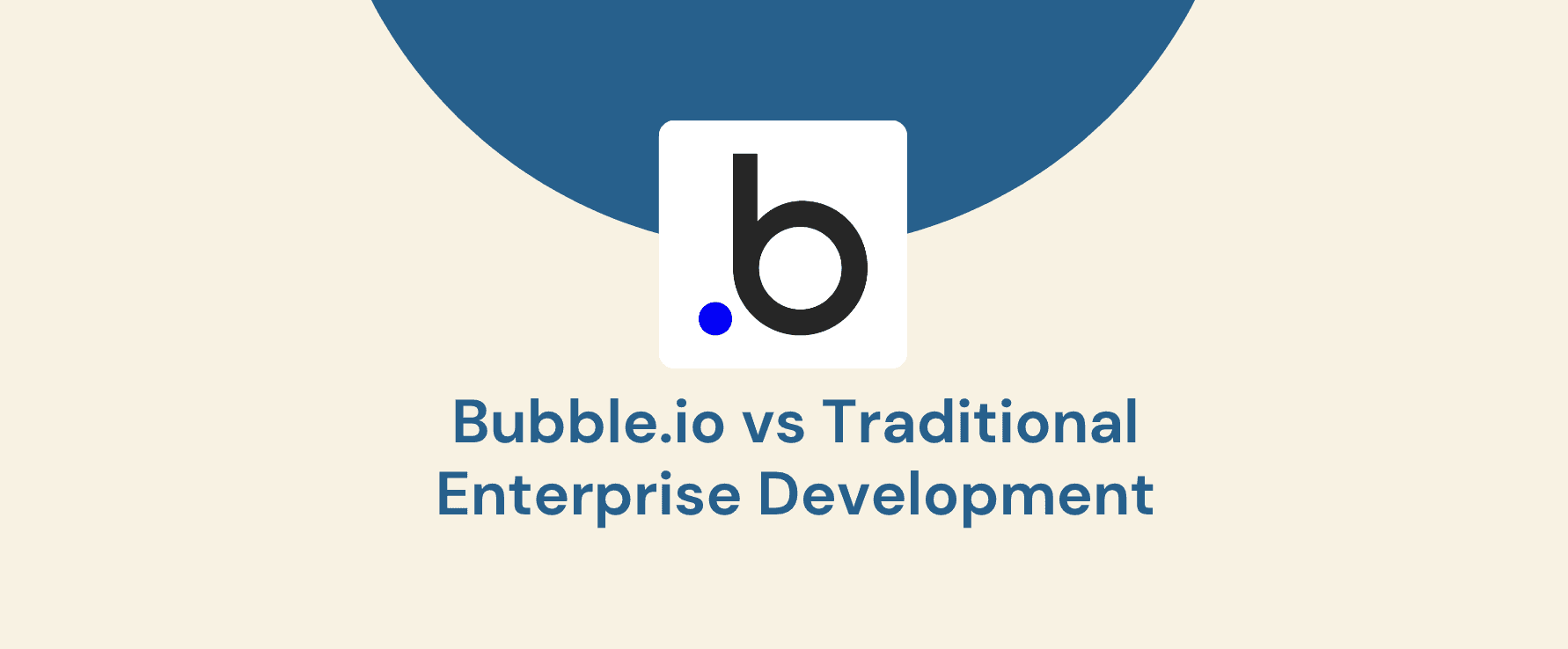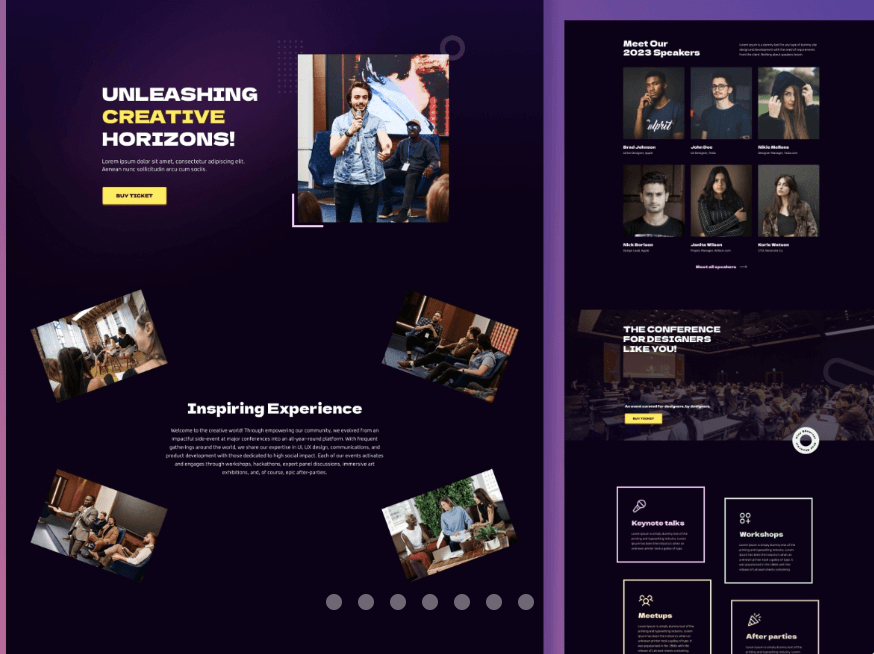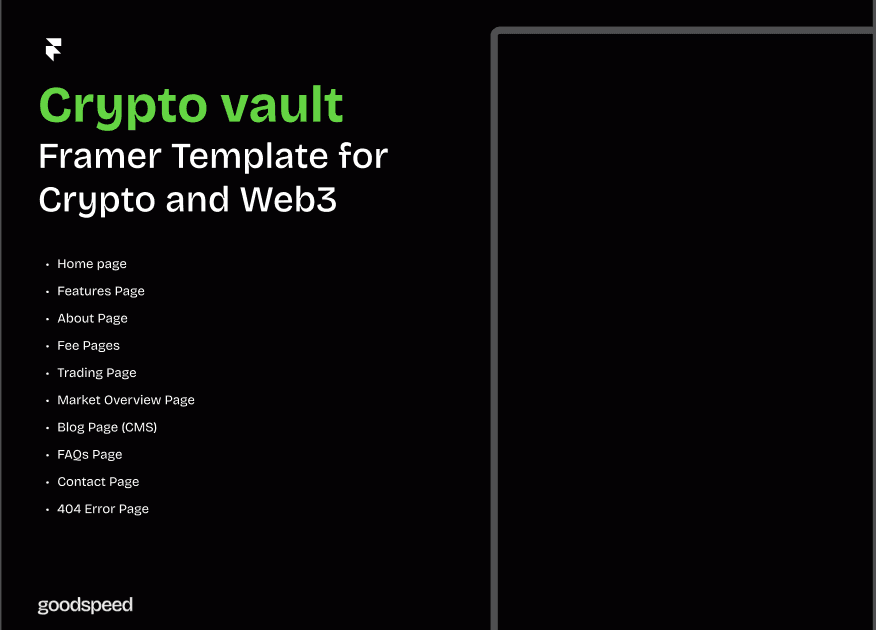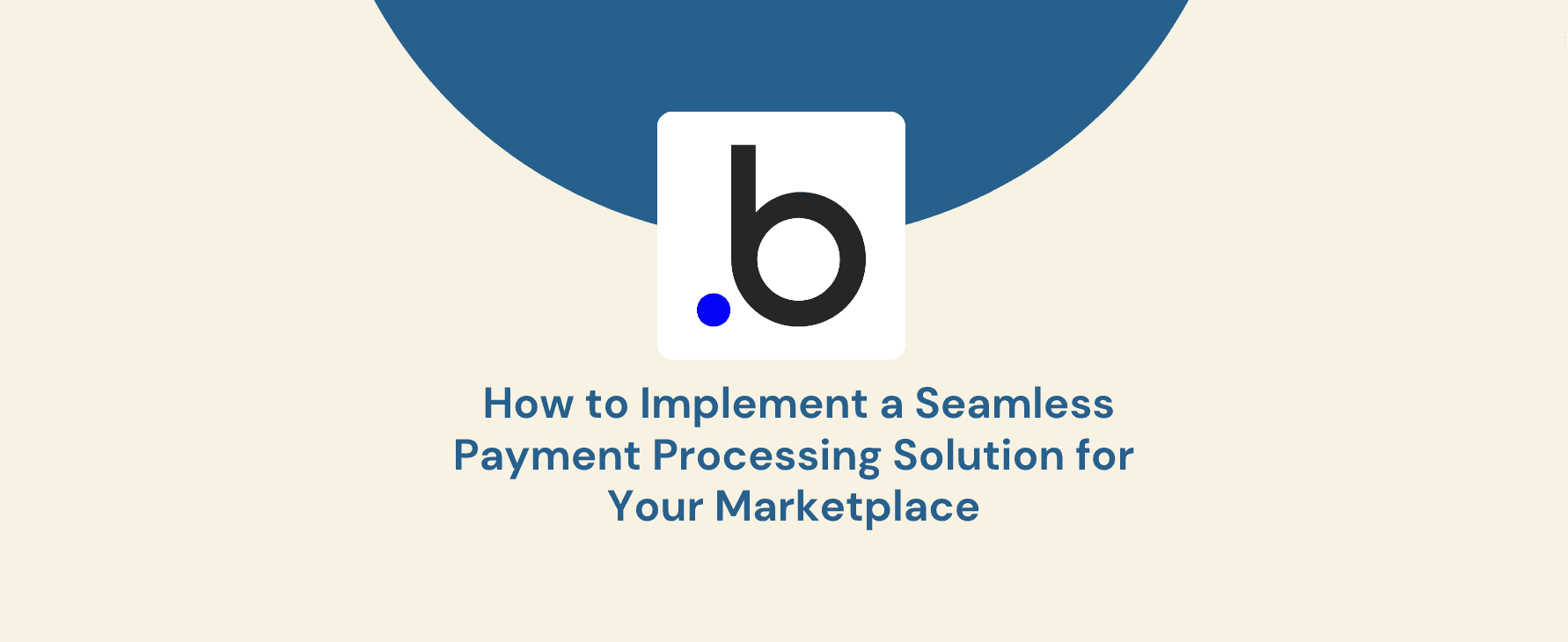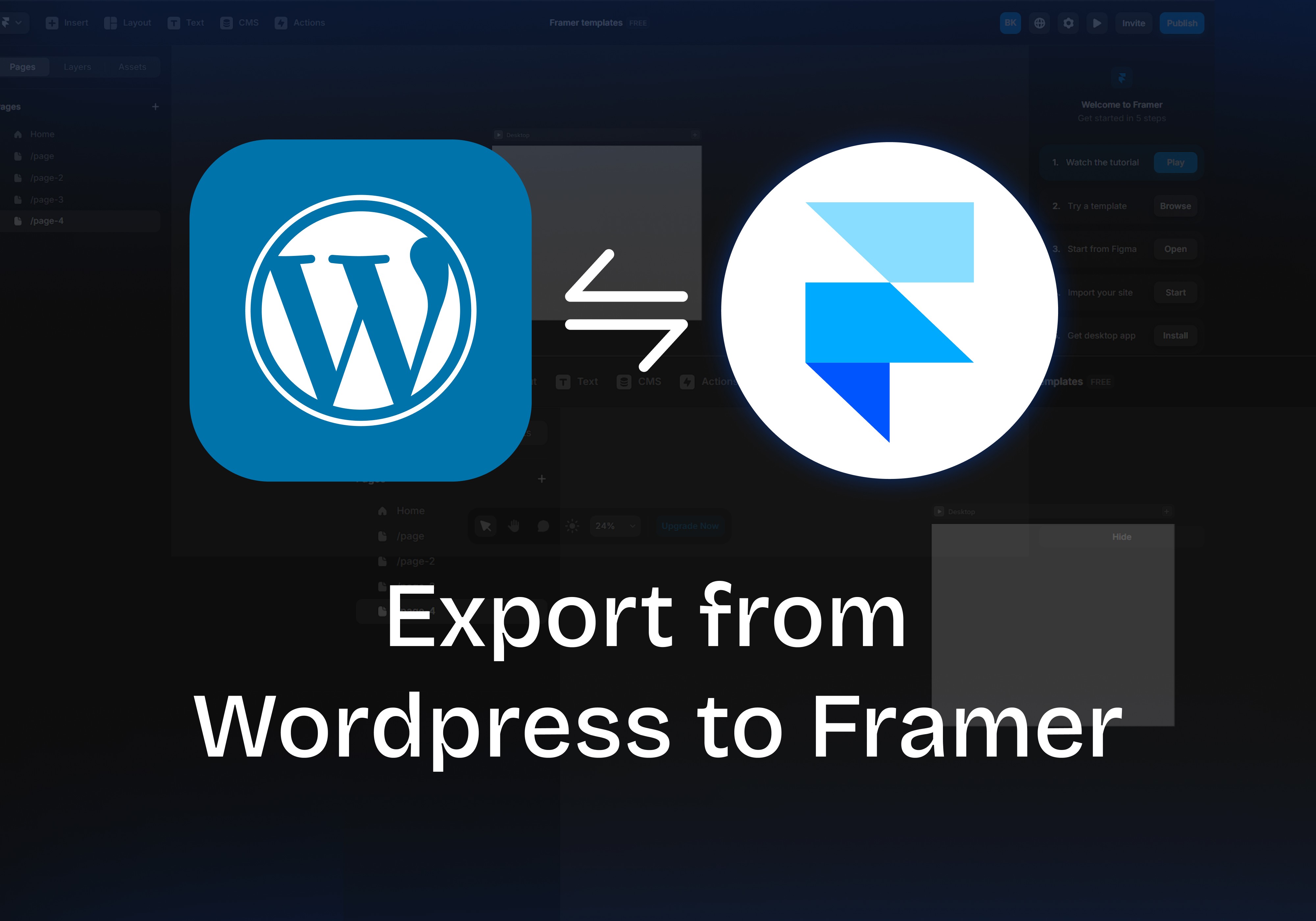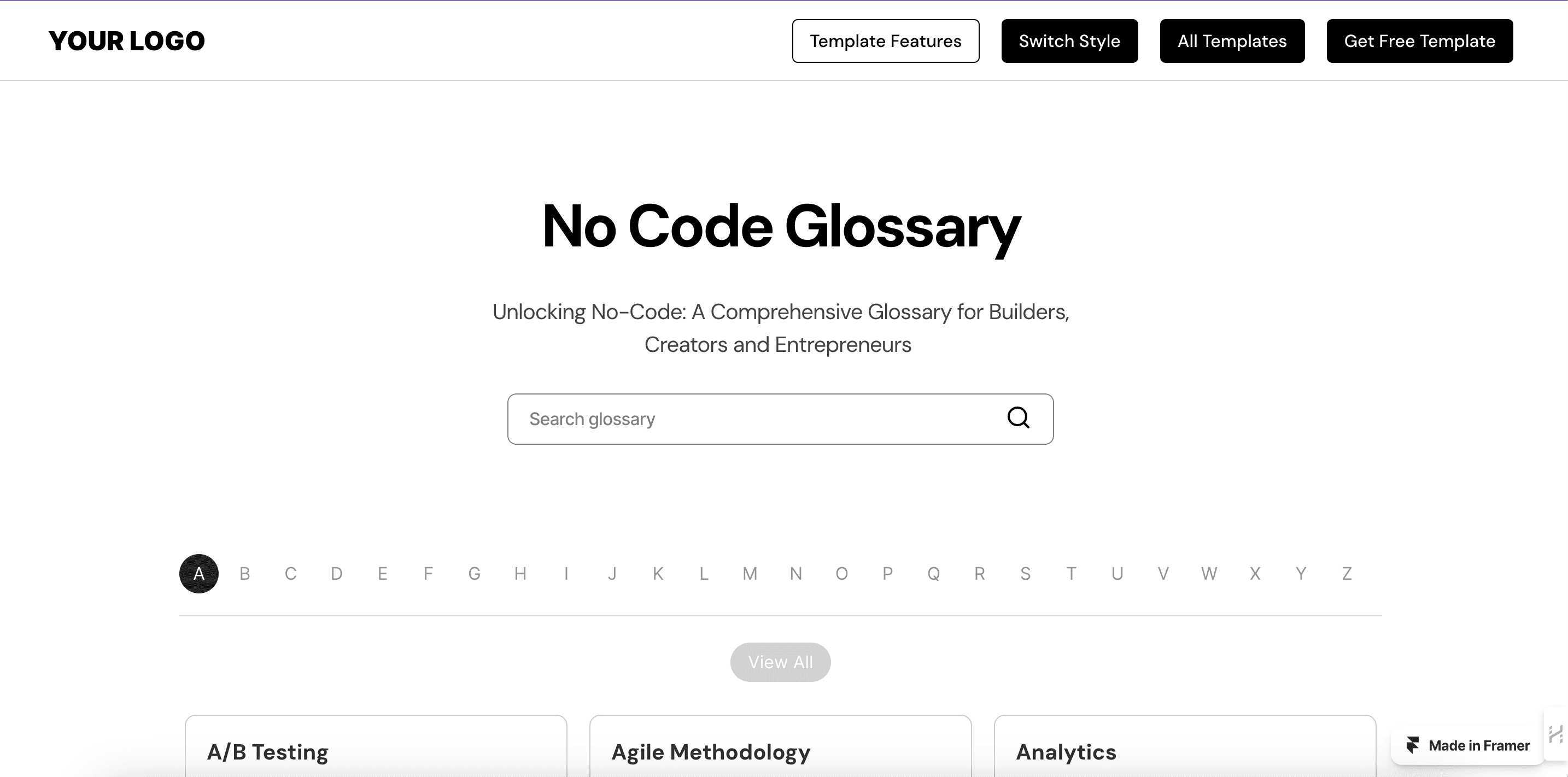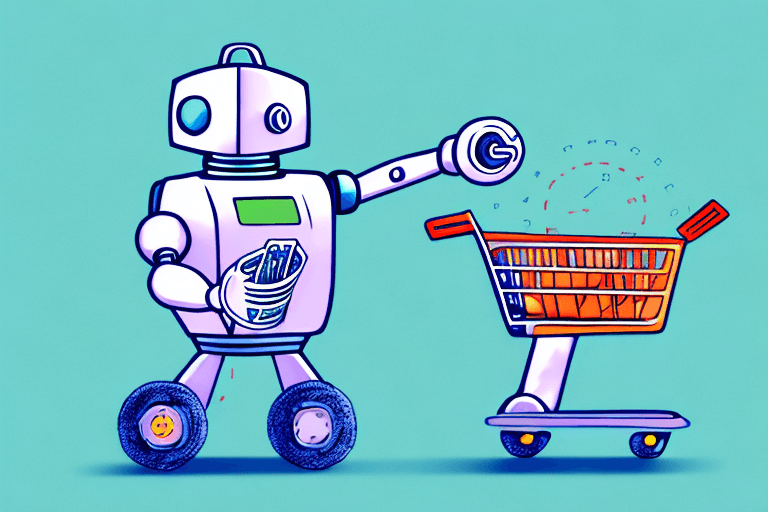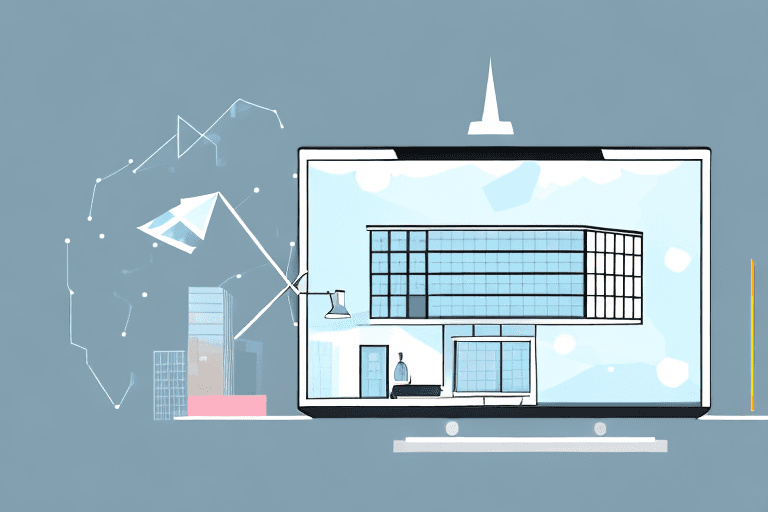Businesses of all sizes are increasingly reliant on custom software applications to streamline operations, enhance customer experiences, and gain a competitive edge. However, developing enterprise-grade software often comes with hefty price tags and lengthy development cycles. This is where Bubble.io emerges as a potential game-changer.
Bubble is a revolutionary no-code development platform that empowers users to build custom web applications without writing a single line of code. This user-friendly approach democratizes app creation, making it accessible to both technical and non-technical individuals alike.
Given the potential cost savings and accelerated development offered by Bubble.io, a crucial question arises: How does it stack up against traditional enterprise development methods in terms of cost-benefit analysis? This article delves into a comprehensive comparison, exploring the advantages and disadvantages of both approaches to guide businesses in making informed decisions.
Understanding Bubble
Bubble is a cloud-based platform that utilizes a visual development interface. Imagine building applications with drag-and-drop functionality and pre-built elements, similar to constructing with Lego bricks. This intuitive approach eliminates the need for extensive coding knowledge, allowing users to focus on design, functionality, and user experience.
Features and Capabilities:
Drag-and-Drop Interface: Bubble.io boasts a user-friendly interface that facilitates the creation of applications through a visual approach. Users can drag and drop pre-built elements, such as buttons, menus, and data fields, to design the application's layout and functionality.
Data Management: The platform offers robust data storage and manipulation capabilities. Users can create databases, define data types, and establish workflows for managing user information, application data, and integrations with external services.
Plugins and Integrations: Bubble.io provides access to a vast library of plugins and integrations. These extensions allow users to connect their applications with various external services, such as payment gateways, social media platforms, and productivity tools, adding a layer of functionality and customization.
Responsive Design: Bubble.io applications are inherently responsive, meaning they automatically adjust their layout and functionality to display seamlessly across various devices, from desktops to smartphones.
Advantages of Using Bubble.io:
Reduced Development Costs: By eliminating the need for a large team of coders, Bubble.io significantly reduces development costs. Businesses can build applications in-house or hire Bubble.io specialists at a more affordable rate compared to traditional development teams.
Faster Prototyping and Development: The visual interface and pre-built elements streamline the development process, allowing for rapid prototyping and faster application development cycles. Businesses can validate their ideas and get applications to market quicker.
Accessibility for Non-Technical Users: Bubble.io empowers individuals and teams with limited technical expertise to build applications. This democratizes the development process and opens doors for innovation within organizations.
Traditional Enterprise Development
Traditional enterprise development refers to the established process of building software applications through programming languages like Java, Python, or C++. This approach relies on a team of experienced developers who possess in-depth knowledge of these languages and software development methodologies.
Features and Capabilities:
Traditional development offers a high degree of customization and control over the application's functionality and performance. Key features include:
Full customization: Developers have complete control over the application's codebase, allowing for highly customized features and integrations.
Scalability and performance: Traditional development techniques are well-suited for building highly scalable and performant applications capable of handling large amounts of data and users.
Offline functionality: Traditional applications can be designed to function without an internet connection, which can be crucial for specific use cases.
Disadvantages of Traditional Enterprise Development:
High Cost: Hiring and retaining a team of skilled developers can be expensive. Additionally, development timelines can be lengthy, further escalating costs.
Slow Development: Traditional coding requires significant time and resources, often leading to longer development cycles compared to no-code platforms like Bubble.io.
Technical Expertise Required: The reliance on coding knowledge creates a barrier to entry for businesses and individuals without a technical background.
Maintenance Challenges: Ongoing maintenance and updates require the involvement of developers, potentially incurring additional costs.
Cost-Benefit Analysis: Bubble vs Traditional Enterprise Development
Making an informed decision between Bubble and traditional development requires a thorough cost-benefit analysis that considers both financial and non-financial factors.
Cost Comparison:
Bubble.io: The primary cost associated with Bubble.io is the platform's monthly subscription fee, which scales based on the application's complexity and usage. Additional costs may include plugins and custom development services if required.
Traditional Development: The cost of traditional development can vary significantly depending on the project's scope, development team size, and location. Costs typically include developer salaries, project management fees, and infrastructure expenses.
Benefit Comparison:
Development Time: Bubble facilitates rapid development due to its visual interface and pre-built elements. Traditional development typically requires longer development cycles due to coding and testing processes.
Customization: Traditional development offers a higher degree of customization compared to Bubble.io, where functionalities are limited by the platform's capabilities and available plugins.
Scalability: Both Bubble and traditional development can be scaled to accommodate growth. Bubble.io offers built-in scalability features, while traditional development requires architectural planning and code optimization.
Maintenance: Bubble.io handles core platform maintenance, while traditional applications require ongoing developer involvement for maintenance and updates.
Analysis of Cost-Benefit Ratio:
For businesses with a clear vision and a budget-conscious approach, Bubble can offer a favorable cost-benefit ratio. Faster development times and lower initial costs make it ideal for prototyping, MVP development, and internal applications. However, for complex applications requiring extensive customization or offline functionality, traditional development might be a better fit despite the higher costs and longer development cycles.
Factors to Consider
Beyond the cost-benefit analysis, several crucial factors influence the decision between Bubble.io and traditional development. Here's a breakdown of key considerations:
1. Development Time and Speed:
Bubble.io: excels in rapid development. Prototypes and MVPs can be built in a fraction of the time compared to traditional coding. This allows for faster validation of ideas and quicker iterations based on user feedback.
Traditional Development: typically involves longer development cycles due to the need for coding, testing, and debugging. This can be a disadvantage for businesses needing to launch quickly or test market concepts.
2. Customization and Flexibility:
Bubble.io: offers a good degree of customization for functionalities within the platform's capabilities. However, complex features or integrations outside the platform's scope might require workarounds or custom development solutions.
Traditional Development: provides unparalleled flexibility for building highly customized applications with unique functionalities and integrations. Developers have complete control over the codebase, enabling them to tailor the application to specific needs.
3. Scalability and Maintenance:
Bubble.io: offers built-in scalability features that can accommodate growing user bases and data volumes. However, extremely resource-intensive applications might encounter limitations. Maintenance is primarily handled by the Bubble.io platform, with some customization needs potentially requiring developer involvement.
Traditional Development: requires careful architectural planning and code optimization to ensure scalability for future growth. Ongoing maintenance and updates are essential and necessitate developer expertise, potentially incurring additional costs.
4. Integration with Existing Systems:
Bubble.io: integrates with various third-party services and applications through plugins. However, complex integrations with legacy systems might be challenging or require custom development.
Traditional Development: provides full control over integrations, allowing developers to seamlessly connect the application with existing systems and databases using APIs or custom code.
5. Security and Data Privacy:
Bubble.io: takes security seriously and offers robust features to protect user data. However, the platform's security ultimately depends on Bubble.io's infrastructure and practices.
Traditional Development: allows for a high degree of control over security measures. Businesses can implement custom security protocols and data encryption based on specific needs and compliance requirements.
By carefully considering these factors alongside your project's specific requirements, you can make a well-informed decision on whether Bubble.io or traditional development is the right approach for your application.
Additional Considerations
Beyond the factors outlined previously, here are some additional points to ponder when making your decision:
Team Expertise: Does your team have in-house developers or experience with Bubble.io? If not, the learning curve for either approach needs to be factored in. Traditional development requires a team with programming expertise, while Bubble.io offers a gentler learning curve for non-technical users.
Project Complexity: Consider the level of complexity involved in your application. Bubble.io shines for straightforward applications with well-defined functionalities. For intricate applications with unique features or integrations beyond Bubble's native capabilities, traditional development might be necessary.
Long-Term Vision: Think about your long-term vision for the application. If you anticipate significant growth or extensive future customization, traditional development might offer more flexibility. Bubble.io, however, can still be a viable option for many applications, with the potential to migrate to a hybrid approach or traditional development later if needed.
Future Outlook
As Bubble.io continues to evolve, its capabilities are likely to expand, making it an even more attractive option for a wider range of applications. However, traditional development will remain essential for building highly customized and mission-critical enterprise applications. Ultimately, the optimal approach lies in understanding your project's specific needs and carefully weighing the cost-benefit analysis of each development method.
Bubble.io presents a compelling alternative for businesses seeking a cost-effective and rapid application development solution. However, the choice between Bubble.io and traditional development is not a one-size-fits-all proposition. By considering the cost-benefit analysis, the factors outlined above, and your long-term vision, you can make an informed choice that aligns with your business goals.
Remember:
Bubble.io excels in: rapid development, cost-effectiveness, ease of use, and user-friendly prototyping.
Traditional development offers: superior control, unmatched customization, and the ability to build highly complex and performant applications.
Want to leverage the power of Bubble.io but need expert guidance? Contact Goodspeed, a team of Bubble Development Experts, to transform your vision into a reality. Goodspeed can help you navigate the Bubble.io platform and ensure your application achieves its full potential.
Frequently Asked Questions (FAQs)
1. Is Bubble.io secure for building enterprise applications?
Bubble.io implements robust security measures to protect user data. However, for highly sensitive applications, traditional development might offer more granular control over security protocols to comply with specific industry regulations.
2. Can I export my application built on Bubble.io?
Currently, Bubble.io doesn't allow full application export due to its proprietary platform architecture. However, you can export your application data for backup or migration purposes.
3. Does Bubble.io offer any offline functionality for applications?
Bubble.io applications are primarily web-based and require an internet connection to function. While some limited offline functionalities might be achievable through workarounds, traditional development offers a more suitable approach for applications requiring full offline capabilities.
4. Can I integrate Bubble.io with my existing business systems?
Yes, Bubble.io offers a marketplace with various plugins that facilitate integration with popular third-party services and APIs. For complex integrations with legacy systems, traditional development might be necessary.
5. What happens if I outgrow the capabilities of Bubble.io?
Bubble.io offers a scalable platform that can accommodate growth for many applications. However, if your application reaches a point requiring significant customization beyond Bubble's capabilities, you might consider migrating to a traditional development approach.

